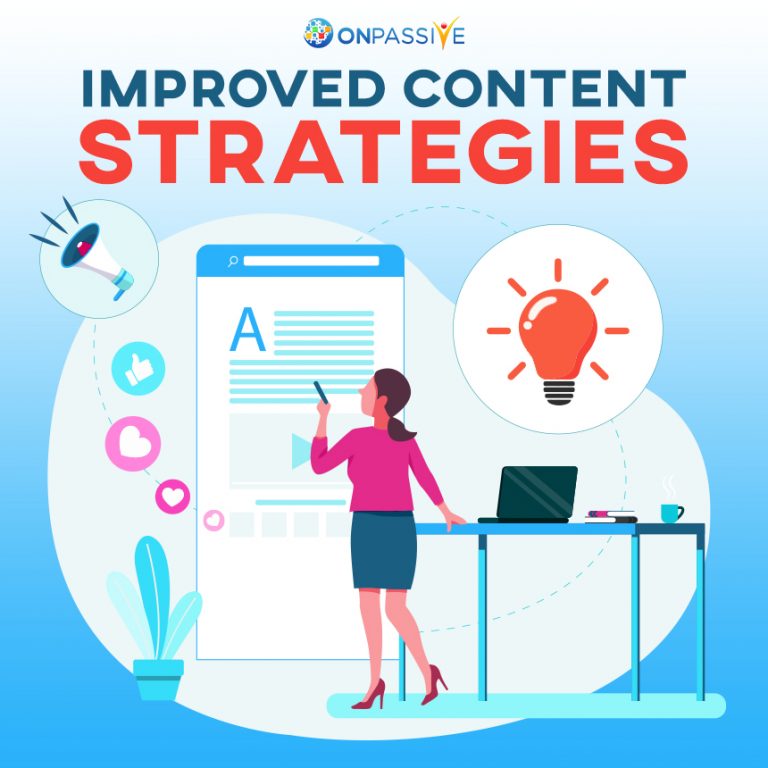
Most companies understand they require a content marketing strategy. They are aware that it includes blogging, sharing to social media, and occasionally emailing a list of consumers. But generating content in this chaotic way will eat up your time, funds, and deliver less-than-exciting results. If you want your content strategy to work, you require data-driven marketing.
In this blog, we’re going to explain to you how you can begin utilizing data to generate content. We’ll also give you some data-driven content marketing examples so that you can start your data-driven marketing and content strategy now.
Related: 3 Essential Facts that You Should Know about the use Of AI in Advertising
1. Establish goals and measure success
At the end of the day, you aim to help your business earn profit. For this purpose, you should be able to target a return on investment (ROI) from your content strategy. In order to get that ROI, you should establish your content strategy’s key performance indicators (KPIs).
KPIs help you to:
- Set a plan for your content strategy
- Measure its accomplishment or failure
- Learn how you can improve it
Therefore what should be your content strategy’s essential performance indicators? Though content marketing should indirectly support to encourage sales and increase your Google ranking; it has other more important goals as well. These goals target consumers when they’re at the tip of the marketing funnel. Your content marketing KPIs must include:
- Engagement
- Customer retention and loyalty
- Brand awareness
While these factors appear less stable than rankings and sales, they are very much essential.
For instance, brand awareness is essential because 59% of buyers choose to purchase new products from brands that are known to them.
You will be able to track your brand awareness through multiple metrics. These involve social engagement and search volume, website traffic, external mentions and links.
Related: Create Viral Content with AI
2. Research target audience
It’s time to understand how data can support you identify your target audience to generate better quality content: content that your audience finds engaging and looks out for entertainment or information.
You might already have an existing consumer base who you aspire to understand better so that you can produce content they will enjoy. Or you might have a fresh product and want to determine your target audience. Either way, you want to accumulate as much data as possible on your target viewers.
Your data must include:
- Location: Location is essential because you’ll find contrasts between urban and rural audiences, time zones, languages are spoken, and numerous other factors.
- Interests: Discover your audience’s interest so that you can serve them topics of interests and tap into what’s trending for their demographic.
- Age: Classify your audience into various age groups (25-35, 35-45, etc.) Additionally, recognize what stage of life they are at. For example, are they university students, new parents, or baby-boomers?
- Spending habits: Get to understand your audiences spending practices such as their tastes, where do they purchase and when.
- Spending power: Know your audience’s disposable income and wealth. Facebook, for instance, gives data on salaries.
Once you possess this data, you can begin generating audience personas to get a better feeling to your audience. Make your personas as authentic as possible by building profiles. Profiles work best when they incorporate names, pictures, and demographic data listed above. In this way, you can envision your audience and design content that is ideal for them.
Related: Discovering Profitability in Content with AI
3. Develop effective content
Similar to your requirement to accumulate data on your audience, you also need to gather data on the nature of the content they engage with and how do they prefer to view that content. Find out which content type your audience is most responsive to.
Types of content include:
- articles
- videos
- social media posts
- ebooks
- infographics
- interactive experiences, and
You can also utilize data to find out your audience’s preferred social media channels, such as Facebook, Snapchat, Instagram, WeChat, or other.
4. Finesse your content
While utilizing data-driven marketing to enhance your content strategy, you can even utilize statistics and numbers to better on the more delicate points of the content itself.
Headings are especially valuable to your content. They’re the first point users see, along with an image, while determining whether to click on an article or post. For this particular reason, your headings need to seize attention and get clicks.
In this article, we’ve explained the connection between content marketing and data science. We’ve explained to you how to determine goals and measure the success of your content strategy. We’ve also shown you how to utilize data to produce authentic content and better that content. Whether you’re planning a content strategy from scratch or boosting a current strategy, your content demands to be data-driven if it’s going to succeed.


